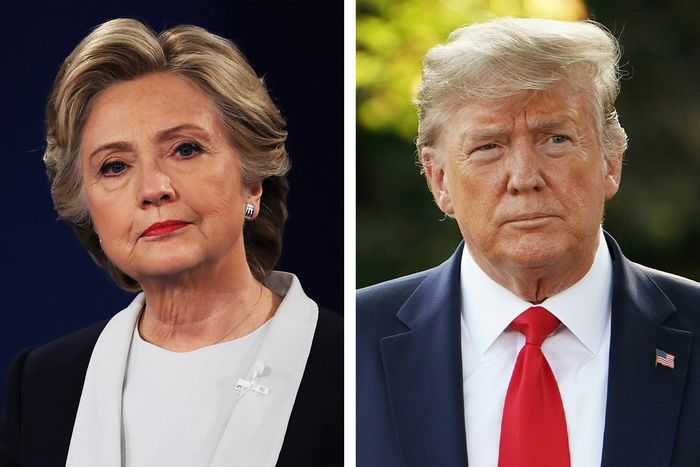
It’s part of the lore of the 2016 presidential election that an overconfident Hillary Clinton campaign went for a landslide by placing resources in states that were a reach for her but failed to protect her flanks in Michigan, Pennsylvania, and Wisconsin, the three states that ultimately flipped from blue to red and elected Donald Trump.
It’s actually a debatable proposition. Clinton did focus on Pennsylvania late in the game and lost there anyway. And as David Wasserman notes in an analysis for NBC News, the Democratic campaign may have erred just as grievously in wasting time and money in Colorado and Virginia, past battleground states that had turned safely blue by 2016.
This time around, though, Wasserman thinks the Trump campaign is the one making odd targeting decisions, mostly by focusing on states the candidate will almost certainly carry if the national race is close enough to win:
So far, it’s laid out millions to play defense in Ohio, Iowa and Georgia — states that may be close today, but are ultimately unlikely to be decisive in the battle for 270 Electoral College votes.
According to an Ad Age analysis of data compiled by tracking firm Kantar/CMAG, the Trump campaign last week pre-booked $99.7 million worth of fall advertising, with the plurality — $37.5 million — going to Florida. To be sure, there will be many more buys to come. But the $18.4 million it laid out in Ohio, a state Trump carried by eight points in 2016, exceeded the costs of its buys in the true battlegrounds of North Carolina, Pennsylvania, Wisconsin, Arizona and Michigan.
The point Wasserman is making is that playing defense in states Trump easily won in 2016 reflects an exaggerated sense of the numbers a presidential campaign can move in a given state, while underestimating the power of national trends:
[W]hat Trump’s campaign might not grasp is that in the modern polarized era of American elections, TV ads only move numbers on the margins and individual states don’t move independently so much as demographic groups do.
Ohio is demographically similar to Michigan, Wisconsin and Pennsylvania: it has an aging, large blue-collar white population, a modest Black population and a relatively low Latino share. But Ohio voted for Trump by seven to eight points more than the other three states. If Biden is ultimately competitive in Ohio come November, he’ll have already won Michigan, Pennsylvania and Wisconsin — and almost certainly the presidency — rendering Ohio irrelevant.
So far, Biden’s campaign isn’t really playing “offense” or “defense” but is targeting potential “tipping point” states likely to decide it all:
[T]he Biden campaign’s first general election TV foray is squarely focused on the six states closest to the “tipping point” of the Electoral College — Arizona, Florida, Michigan, North Carolina, Pennsylvania and Wisconsin — even though polls show him well ahead in all of those states today.
If Biden starts spending serious money in states like Georgia and Texas, it will almost certainly be a sign that his national lead is so large and durable that the battleground states are a lock and he really is trying to run up the score in order to earn a mandate while helping down-ballot candidates (particularly those running for Senate).
Meanwhile, Team Trump would be well advised to consider ways to lift its candidate’s national levels of support before worrying that much about individual states. If Trump gets within striking distance of Biden, then he can start worrying about where to make the investments that might marginally affect the results in the very closest states. Odds are they won’t include Ohio.






























